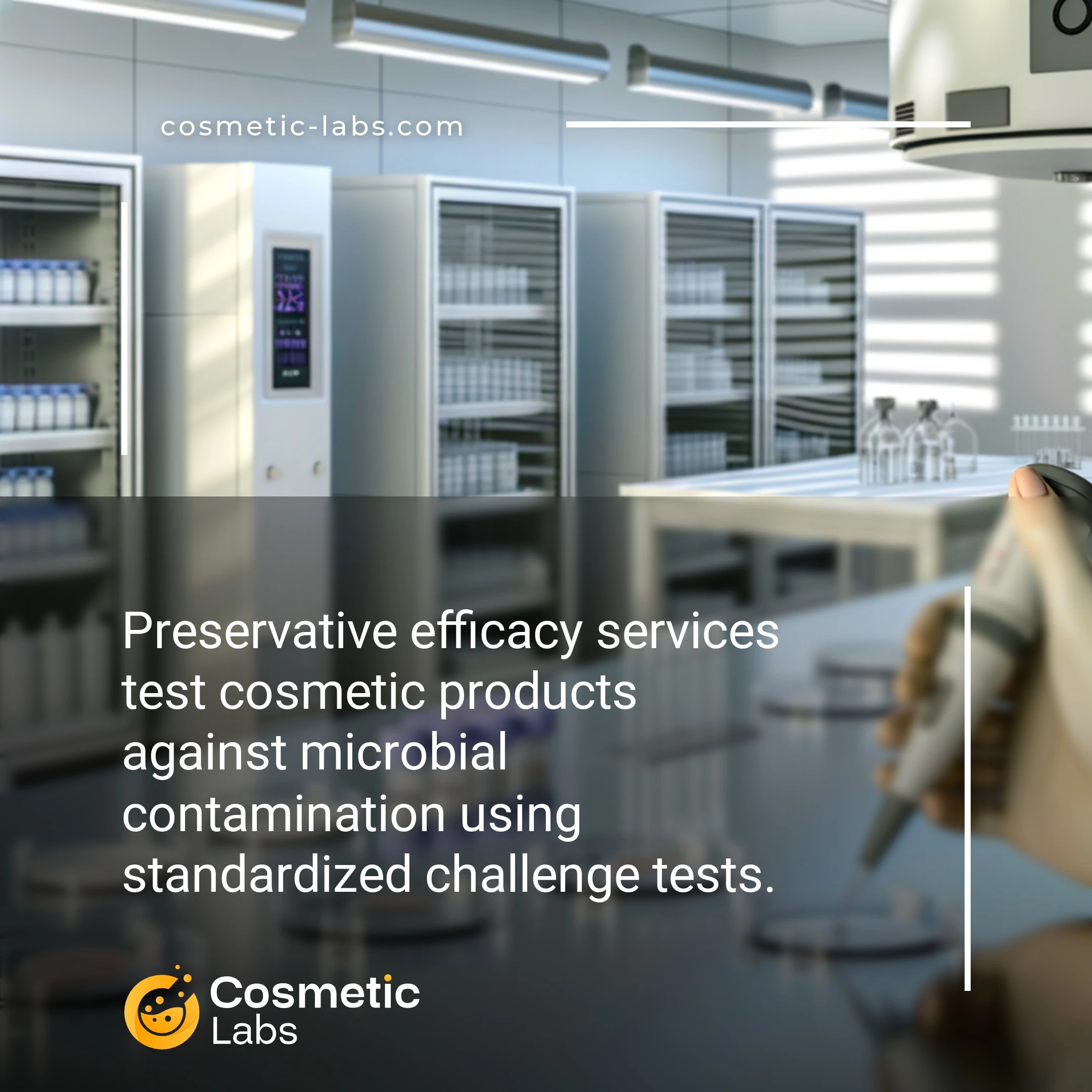Preservative Efficacy Services for Reliable Cosmetic Product Safety

What is Preservative efficacy?
Preservative efficacy testing is a microbiological challenge test that confirms your cosmetic formula can resist contamination throughout its shelf life. Labs inoculate your product with specific bacteria, yeast, and mold strains, then monitor microbial counts over 28 days to verify your preservative system works. This mandatory safety assessment follows ISO 11930 or USP 51 protocols and typically costs $800-1,500 per formula variant.
Why do you need this service?
Cosmetic labs apply preservative efficacy testing to validate product shelf life before market launch, running challenge tests against bacteria, yeast, and mold to ensure formulations resist contamination for 24-36 months. Labs also use these services to optimize preservative systems in natural formulations, reducing concentrations while maintaining full antimicrobial protection that meets USP 51 and ISO 11930 standards.
Who provides Preservative efficacy services?
All cosmetic labs providing Preservative efficacy services
There is no company providing these services at the moment.
Preservative Efficacy Testing Services
Preservative efficacy testing validates whether your cosmetic formulation can resist microbial contamination throughout its shelf life. Labs on our platform offer challenge testing that meets USP, EP, and ISO 11930 standards to verify your product’s safety.
Challenge Test Protocols and Timelines
Testing labs inoculate your product samples with specific microorganisms at controlled concentrations. They monitor bacterial and fungal counts at set intervals over 28 days.
Standard test organisms include:
- Pseudomonas aeruginosa
- Staphylococcus aureus
- Escherichia coli
- Candida albicans
- Aspergillus brasiliensis
Most labs deliver results within 5-6 weeks, including detailed reports showing log reduction values for each organism.
Preservative System Optimization
When products fail initial testing, labs help reformulate your preservative blend to achieve required protection levels. They test different preservative combinations and concentrations against your specific formula base.
Labs also evaluate preservative compatibility with your packaging materials and pH ranges. This prevents issues like preservative absorption into plastic containers or reduced efficacy in alkaline formulations. Testing typically covers pH ranges from 4.5 to 8.0, matching most cosmetic products.
Practical Applications of Preservative Efficacy Testing in Product Development
Preservative efficacy testing validates whether your formula’s preservation system protects against microbial contamination throughout the product’s shelf life.
Formula Optimization During Development
Labs perform preservative efficacy testing at multiple development stages to refine your preservation strategy. Initial challenge tests reveal how different preservative concentrations perform against specific microorganisms like Candida albicans, Aspergillus brasiliensis, and Pseudomonas aeruginosa.
Testing protocols follow ISO 11930 or USP 51 standards, with results typically available within 28 days. This data guides formulation adjustments, helping you achieve effective preservation at the lowest possible concentrations while maintaining product stability.
Batch Release and Quality Assurance
Production facilities integrate preservative efficacy testing into batch release protocols to verify consistent antimicrobial protection. Labs inoculate samples with standardized microbial suspensions at 10^5-10^6 CFU/g, then monitor reduction rates at specific intervals.
| Test Organism | Required Log Reduction | Timepoint (Days) | Product Category |
|---|---|---|---|
| Bacteria (P. aeruginosa, S. aureus) | ≥3 log | 7 | Leave-on products |
| Bacteria (P. aeruginosa, S. aureus) | ≥3 log | 14 | Rinse-off products |
| Yeast & Mold (C. albicans, A. brasiliensis) | ≥1 log | 14 | All categories |
| All test organisms | No increase | 28 | All categories |
Results determine whether batches meet safety requirements before market release. Labs also conduct compatibility assessments between preservatives and packaging materials to prevent interaction-related efficacy loss.
